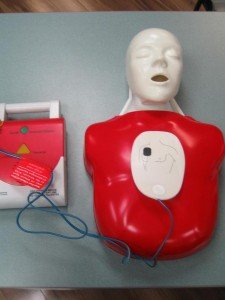An automated external defibrillator or AED are specialized defibrillators that can be used on individuals experiencing sudden cardiac arrest. These are portable devices that can analyze the heart rhythms, detect abnormal rhythms and provide an electric shock if needed. Understandably, CPR is initially perform and also important since it keeps the blood flowing to the brain and heart, but only defibrillation from an AED can restore the normal rhythm of the heart and help save a life.

Today, AEDs are readily available in both public and private areas where large group of people stay such as schools, offices and malls. Nevertheless, many people are now buying AED for home use. This is due to the fact that most cases of sudden cardiac arrest occur at home and many believe that having an AED at home can help save a loved one’s life.
Speculation on the effectiveness of home-use AEDs
Based on studies conducted, it was shown that home-use AEDs are considered effective and safe. On the other hand, critics believe that there is no supporting evidence that home-use AEDs can save lives. It is believed that people will simply delay calling for emergency assistance if they have an on-hand AED at home. Additionally, many are concerned that those who have AEDs at home cannot use them properly or keep them maintained.
Do you need a home-use AED?
It is still best to consult your doctor to determine if having an AED at home is a good idea. Individuals who are at high risk for cardiac arrest surely need one at home since it can be used to save a life. An AED at home will cut down the time you have to wait until the medical team arrives since every minute counts when it comes to sudden cardiac arrest. If help is delayed, it can cost the life of the individual. If an individual is living alone, having an AED is pointless since no one will be there to use it in case of an emergency.
Other factors to be considered include the physical limitations, allotted budget and mindset. An AED can cost up to $1300 or more and are not covered by insurance. Obviously, it is an investment that you have to think about carefully or if you can manage to invest in one. Additionally, do not forget your physical limitations. Using an AED effectively would require you to sit or squat on the floor in order to operate the device.
Lastly, some individuals do not want to be resuscitated if they were to experience cardiac arrest. Those who have serious health problems or a terminal illness might prefer to let nature take on its course than to be resuscitated with CPR and an AED. Understandably, it is also your choice whether to purchase an AED for home use.
